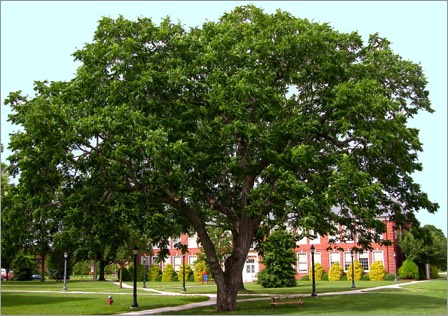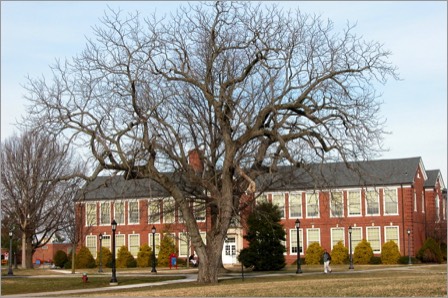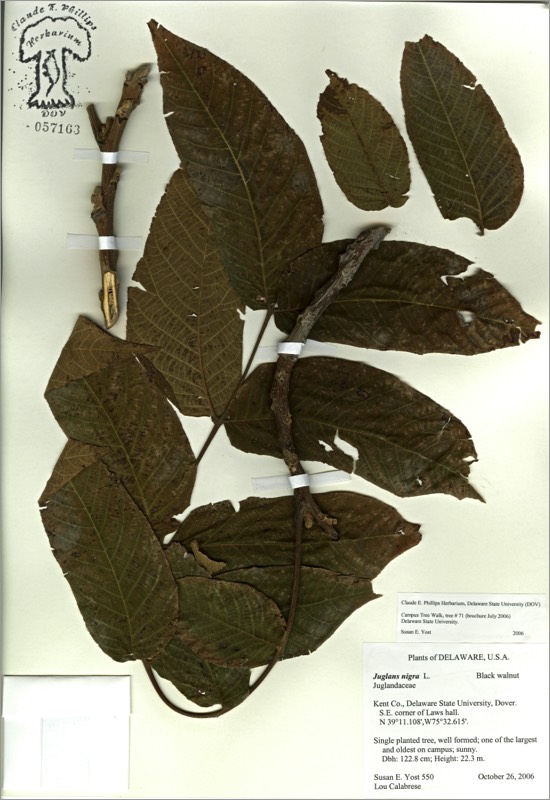Black walnut


Black Walnut with Delaware Hall (1927), in summer (above) and winter (below).
This tree is on the waiting list for State Record tree for its species; diameter (DBH) 4 feet. (Map coordinates S-21).
Juglans nigra
BLACK WALNUT
Juglandaceae
E. North America
Location: map coordinates R-16 (northeast of Loockerman Hall),
N 39°11'7'' W 75°32'40''; and
S-21 (east corner of Laws Hall, southwest of Delaware Hall), N 39°11'6'' W 75°32'38''
Planting history: R-16 and S-21: planting history presently unknown. S-21 is one of the oldest campus trees, and is on the waiting list for State Record tree for its species; diameter (DBH) 4 feet.
Description:
Native species, State Rank S5 (very common in Delaware)
BLACK WALNUT
Juglandaceae
E. North America
Location: map coordinates R-16 (northeast of Loockerman Hall),
N 39°11'7'' W 75°32'40''; and
S-21 (east corner of Laws Hall, southwest of Delaware Hall), N 39°11'6'' W 75°32'38''
Planting history: R-16 and S-21: planting history presently unknown. S-21 is one of the oldest campus trees, and is on the waiting list for State Record tree for its species; diameter (DBH) 4 feet.
Description:
- large deciduous tree
- etymology: Juglans from the Latin name for Juglans regia (from jovis [Jupiter] and glans [nut]; nigra = black (referring to the bark)
- leaf pinnately compound; leaflets (9) 15-23, end leaflet often missing; crushed leaf smells spicy. Autumn foliage yellowish
- monoecious (separate male and female flowers on same tree); flowers small; male flowers in catkins
- fruits large, round; husk greenish-brown; nut 2-valved; seed edible, but difficult to extract from shell; husks used for yellow-brown dye
- pith chambered
- looks similar to butternut Juglans cinerea, but upper edge of leaf scar not hairy, end leaflet often absent, and pith lighter brown
- allelopathic; all parts contain juglone, toxic to many other plants
- wood heavy, hard, valued for furniture (large trees almost exterminated in some areas); color dark with lighter sapwood center
- habitat open woods, edges
Native species, State Rank S5 (very common in Delaware)


There are 2 labeled black walnut trees.
HIT REFRESH TO START LOCATION GRAPHIC